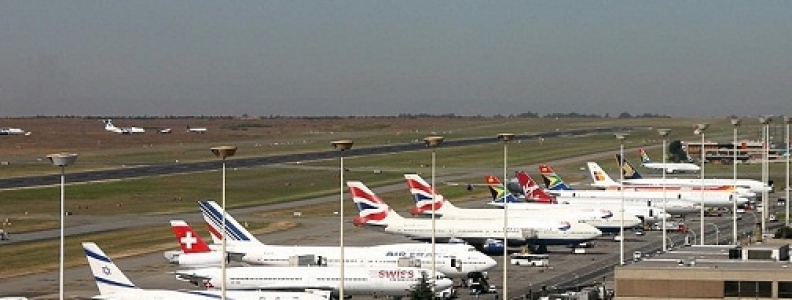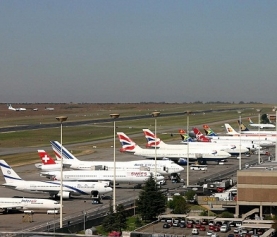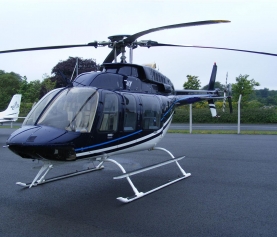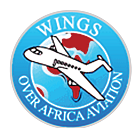
British Airways Marks 82nd Anniversary of Services To South Africa.
Eighty-two years ago a handful of passengers boarded a big plane for the first leg of a 11-day journey which would pioneer an air service that today still links South Africa and the United Kingdom. With little fuss or fanfare, Imperial Airways opened the first passenger air route to span the length of Africa and start a service which endures today.
By today’s standards, the journey was convoluted, long, daunting and uncomfortable and involved numerous aircraft changes, with two sectors being completed by train. For the equivalent of R1600 in 1932 money, passengers left London in a Handley Page HP42 before boarding a train for the next stage.
The flight which departed from the London Borough of Croydon on April 27, 1932, was operated by Imperial Airways, British Airways predecessor, and was its first passenger service to South Africa. It followed an experimental extension of the Imperial Airways Central African service on December 9, 1931,to deliver Christmas mail to Cape Town.
That journey took 12 days, with the aircraft used on the least sector, DH66 G-AARY, City of Karachi, arriving in Cape Town on December 21. On January 20, the next year, Imperial Airways opened a mail-only route to Cape Town ,paving the way for the passenger service three months later.
Different aircraft were used for each part of the journey including a Kent Flying Boat, Armstrong Whitworth Argosy, a Calcutta Flying Boat and finally a de Havilland DH66 Hercules. The logistics of establishing a scheduled passenger air service where none existed were considerable. Landing strips had to be carved out of the bush and kept serviceable. This meant clearing thorn trees and other obstacles, in one case 63 ant hills 12 metres in diameter. In another, fresh elephant tracks regularly needed to be filled in to keep the runway open. Maintenance facilities had to be established and fuel depots set up.
Despite these difficulties, Imperial Airways placed a premium on passenger comfort .Contemporary accounts describe the passenger cabins of the aircraft as luxurious with inlaid wood paneling, big windows and comfortable armchairs, each with controls to open cool-air inlets or turn on a heating device “that sends warm air up the legs”. In-flight catering was a relative novelty, which the airline had been the first to introduce on the London-Paris route five years earlier.
Before this, customers were expected to fend for themselves. The on board service included a steward serving tea and cakes, sandwiches, snacks, coffee and drinks such as whisky, beer and mineral water. According to Imperial Airways historian, Staurt Menzies, the in-flight entertainment included crossing vast swamps and lakes abounding in hippopotamus and crocodile, seeing the snow-capped peak of Kilimanjaro or a herd of elephant startled by the aircraft.
On the ground, arranging meals and accommodation at the rest stops in established destinations such as Brindisi, Athens, Alexandria and Cairo was relatively easy, with customers staying in leading hotels. With no such facilities near many of the new airfields, Imperial Airways built a chain of guest houses so “Passengers can sleep comfortably on land each night surrounded by modern comforts situated in the very heart of the wilderness.
” Small wonder then, that when writing about the journey to Cape Town, Menzies was aghast the airline had not made “a greater song and dance” about it.”It just opened, and so quietly that you hardly realize what an immense achievement it represents.” While the service was novel, clearly an imperative was to cut the journey time to press home the advantage of air travel. By 1934 the journey to Cape Town was reduced to seven-and –a half days’ year later a second frequency to Johannesburg only was added.
On June 2,19377,Imperial Airways started the first flying boat service to South Africa, operating Empire Flying Boats to Durban. The route was by no means straightforward departing Southampton for Marseilles, then on to Rome,Brindisi and Athens before crossing the Mediterranean and Alexandria .
Then it went to Cairo,Wadi Halfra,Khartoum,Malakal,Butiaba,Port Bell,Kisumu,Mombasa,Dar es Salaam,Lindi,Beira and Lourenco Marques before arriving Durban. By 1938 Imperial Airways had begun operating Empire Flying Boats to Durban, with connections to Johannesburg and Cape Town. Besides further cutting the journey time to four-and-a half days the flying boats had other advantages.
Airfield maintenance was no longer a concern and they landed near ports or established towns on lakes and rivers where there was existing infrastructure, making the logistics of maintaining aircraft and accommodating customers much easier. During World War 11 ,the route over Europe was cut and Imperial Airways successor ,BOAC,began a weekly “Horseshoe” route from Durban to Sydney via Cairo and Karachi.A few months later a flying boat service was started linking Poole and Lagos and then on to Durban. Post-war BOAC, as Imperial Airways had then become, started a weekly London to Johannesburg cargo service using Lancastrian aircraft. Soon afterwards passenger services were introduced.
The Short Solent flying boats on the route filed a slightly less torturous flight plan than their predecessors, departing Southampton then flying to Augusta, Cairo, Luxor, Khartoum, Port Bell and Victoria Falls before landing on the Vaal Dam. The next significant development was on May 2,1952,when the world’s first commercial passenger jet service began, with a BOAC Comet flying from London to Johannesburg, via Rome, Beirut, Khartoum, Entebbe and Livingstone.
The 23-hour journey between London and Johannesburg nearly halved the previous flight time. In 1957 BOAC introduced Bristol Britannia aircraft on the route. These flew to Johannesburg and then on to Sydney. By the 1970s, BOACs successor, British Airways, had begun operating Boeing 747s and these soon became the mainstay of the long-haul fleet.
When it began direct 747 services to Cape Town in 1984, Capetonians soon dubbed the aircraft the “Friday night Jumbo”. In 1996, aircraft in British Airways livery started operating on South African domestic routes, after the airline signed a franchise agreement with Comair .These domestic services were later extended to include regional destinations.
Today, British Airways offers 17 flights a week between London and Johannesburg and daily flights to Cape Town. Over the busy Cape Town summer season, the scheduled increases to double-daily. Then last month, the airline introduced the world’s largest commercial airliner, the Airbus A380, on its South African service to Johannesburg.
‘It’s amazing to think that over 80 years ago we were operating bi-planes that could carry seven passengers and the journey took over a week. Today we have up to five flights a day that do the journey in about 11 hours,” said Daniel Bainbridge, British Airways strategic commercial Manager, South Africa.
Air transport has, made business easier and quicker globally as many airlines have introduced international, regional and domestic daily flights which connect cities. Commercial flights have become more affordable as manufacturers and airlines strive to research on the customers’ needs and wants by introducing new technologies and jumbo jets which are efficient, reliable and cost effective and the benefit is shared among the airliner and the consumers.
With the jumbo jets which carry double the capacity the airfare will reduce drastically and with non-stop flights business executives will be able to do their business globally with no worries as they can travel in two days and make business deals. Anthony A Juma is the Editor and Director Commercial and Flights Operations at Wings Over Africa Aviation Limited.





